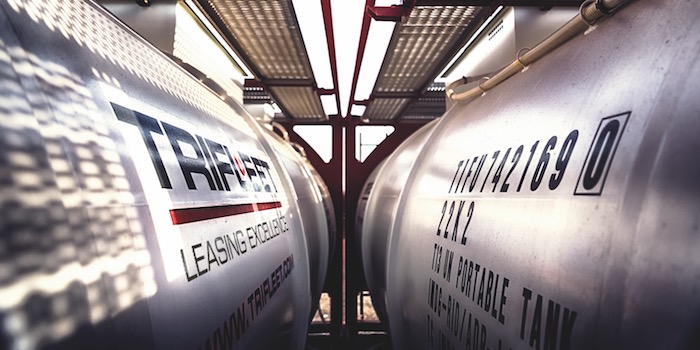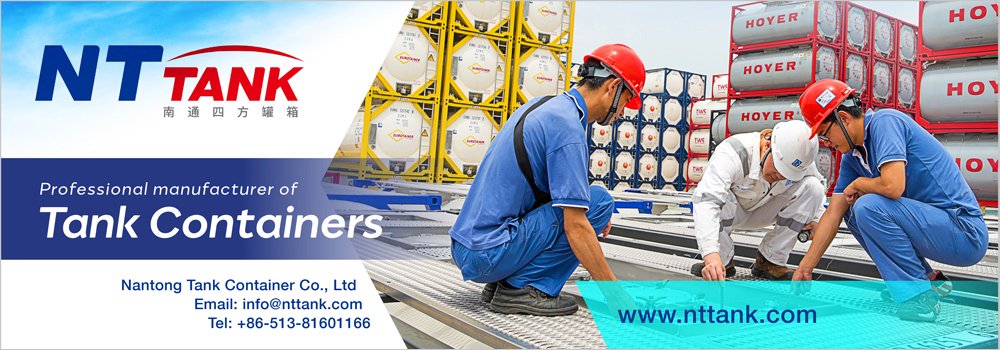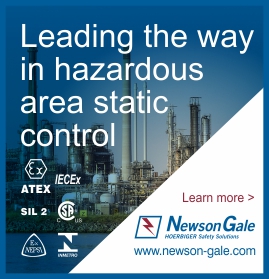Tank Containers: The Cryogenic/LNG Market
As an alternative fuel for oil-based products, LNG is considered to be the most environmentally friendly fuel for the coming decades. In the rapidly growing gas market, there is an increasing need for transport storage capacity in the form of intermodal tank containers. And, as an alternative fuel for ships and trucks, LNG is soaring in particular.
The worldwide small-scale LNG market is projected to reach $51.9bn by 2026, which shows a CAGR of 6.7% over $25.7bn in 2016 (source: TechSci Research, September 2017). The increasing demand for LNG as low emission fuel, and therefore addressing environmental concerns, is driving the cryogenic equipment demand. Accordingly, numerous research institutes forecast a significant increase of the cryogenic equipment market.

According to MarketsandMarkets estimations, the cryogenic equipment market will grow to $22.42bn by 2021 (compared to $16.18bn in 2016), while Grand View Research estimates a figure of $25.05bn by 2022. As tanks are the most expensive cryogenic equipment, they also make up the largest part of the cryogenic equipment market share. According to Grand View Research, tanks accounted for over 55% of the overall revenue in 2014. The supply of LNG requires flexible storage, which can be achieved by operational leasing. What’s more, in view of the significant investment involved in LNG installations – of which stationary tanks are responsible for the majority of this – the need increases when it comes to turning capital expenditure into operational expenditure by leasing storage through intermodal tank containers.
The development, specification and manufacturing of cryogenic tank containers and related equipment is not only expensive, but, in particular, a demanding technical challenge. And working in this field requires a great deal of in-depth knowledge about the tank, the market, and the transported goods. At Trifleet, this comes in the form of Jaap Kuijpers Wentink, Managing Director of the Cryogenic Division, and his Trifleet technical team, all of whom are trained and certified to work with cryogenic/LNG tank containers. What makes the design of cryogenic tank containers particularly challenging is the plethora of differing market demands and respective design options.
Cryogenic tank containers are vacuum with multilayer super insulation and have expensive cryogenic valves that need to be fire safe, and are designed for extremely low cryogenic temperatures of -196°C. All Trifleet cryogenic tanks have double wall stainless steel (inner and outer tank). In addition, cryogenic tank containers need more approvals and certificates than common tank containers. Altogether, this makes the engineering complicated and results in six-digit prices for cryogenic tank containers.
Given the complexity, a lessor needs considerably more than just capital to offer cryogenic tank containers and related equipment. To ensure it can bring just as much to the table as its partners, Trifleet acquired considerable expertise in the market requirements, the design and the manufacture of cryogenic tanks and equipment. This gives Trifleet the knowledge to develop superior design tanks with detailed technical specifications, which enhance the operational advantages for customers.
These advantages cover for example:
- Fast loading and unloading, because of the size of the pressure build-up vapourisers;
- Long holding time of approximately 120 days;
- Stainless inner and outer tanks, resulting in a better vacuum;
- Best-quality valves (Herose);
- Provision for double bottom fill.
For more information, visit: www.trifleet.com
9th July 2018

















